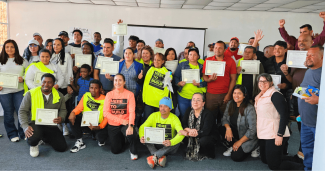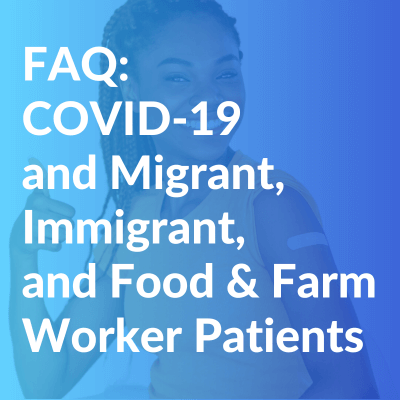Equipping Climate Workers to Stay Safe: Health and Safety Training with MCN and Resilience Force in New Orleans
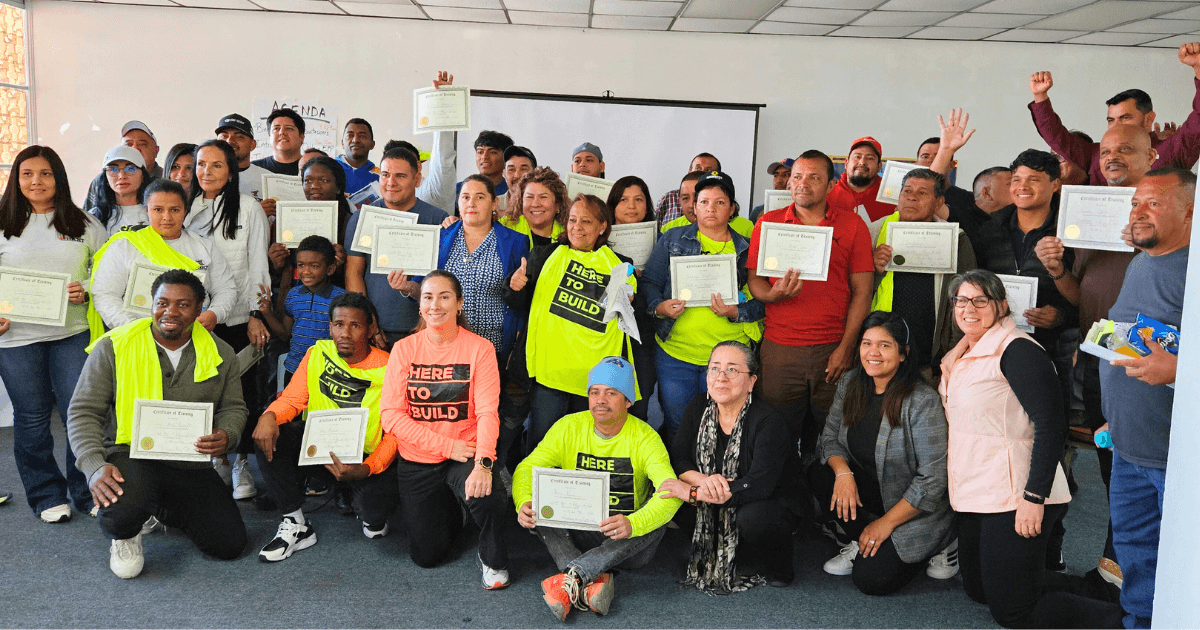
Earlier this month, Migrant Clinicians Network’s Amy Liebman, MPA, MA, and Alma Galván, MHC, headed to New Orleans to meet up with organizers and workers from Resilience Force, a national initiative supporting and advocating for resilience workers, the emerging class of migrant workers who clean up after climate disasters like fires, floods, and hurricanes. They face significant health risks and lack workplace safety training and regulatory and workplace protections. MCN’s goal on this trip was to learn more about Resilience Force’s efforts, get to know the needs and health risks of these workers, and learn how MCN and Resilience Force can offer their expertise to help climate workers stay safe. Here, we sit down with Amy to hear more about the training and what they learned about climate migrants. MCN is grateful to Global Giving for supporting our efforts to bring health and safety trainings to the resilience workforce.
What is a climate worker or resilience worker?
A climate worker is a temporary worker who moves into an area after a climate-fueled disaster to do cleanup, demolition, and reconstruction. More and more, their ranks are made up of immigrant workers , often without authorization to work in the US. There have always been these types of workers -- there are lots of names for this type of worker – “disaster clean-up workers,” “reconstruction workers,” – but the climate crisis has increased the need for this type of worker as disasters become more frequent and more severe, and have hit areas that used to not experience such disasters.

As we heard at this training, many of these workers go from disaster zone to disaster zone, seeking work in reconstruction. Joel, a worker from Venezuela told us, “Since arriving in the United States in 2018, I have dedicated myself to rebuilding communities after 17 different disasters.” Wildfires in the West, Hurricane Ian in the South. Floods, snowstorms, and more hurricanes. Many of the workers we talked with had found work in the New Orleans area, and moved from Florida after having worked on reconstructing homes and buildings after Hurricane Ian.
Our partner in this learning session and training, Resilience Force, calls them “resilience workers.” Resilience Force has been working closely with and supporting this workforce for years now. They’ve done an incredible job of organizing resilience workers, particularly around exploitation issues. They have been working on professionalizing and labeling this workforce, so they can advocate for their specific labor needs, like fair wages and special visas.
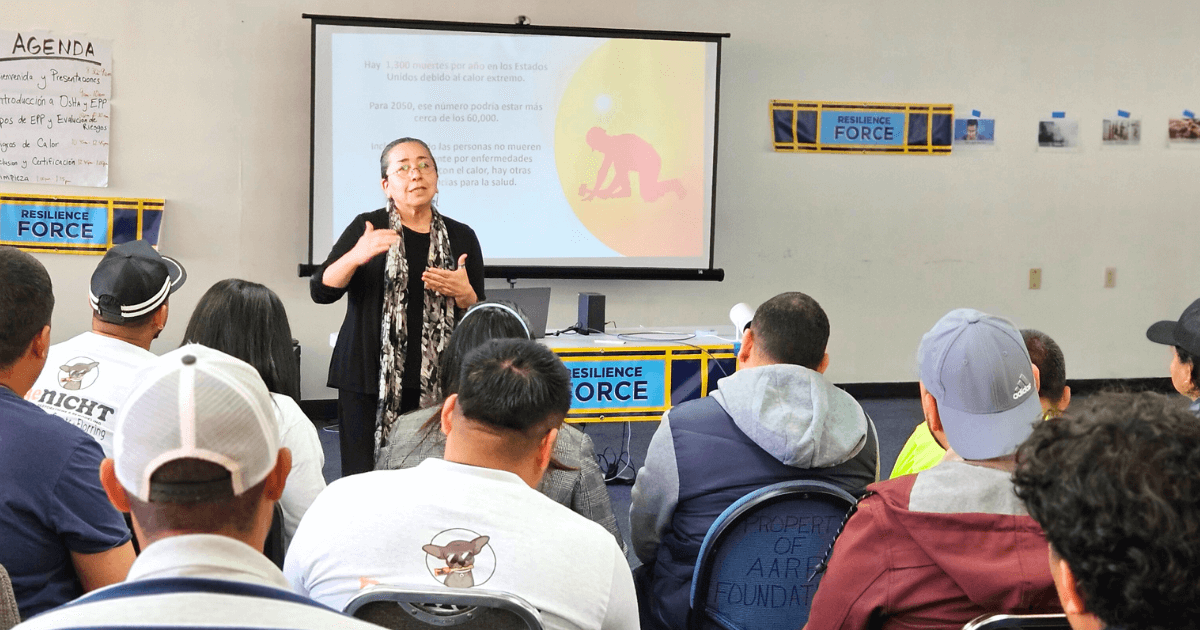
How was Migrant Clinicians Network involved in this training?
For this training, Resilience Force brought in Migrant Clinicians Network to provide the health and safety trainings that we’re well known for. We got to see Resilience Force in action – there were 43 workers, 13 of them women. All were immigrants from lots of places including Honduras, Peru, Mexico, the Dominican Republic, and Venezuela, and the training was in Spanish. The workers talked about their various tasks when they introduced themselves. Some were small general contractors, roofers, demolition crew members… many of the women referred to themselves as finishers – doing paint, drywall, the detail work.
Cynthia Hernandez from Resilience Force started off the training by talking about personal protective equipment, as well as workers’ rights, including about the role of the Occupational Safety and Health Administration and regulations to protect workers.
Alma Galván and I followed up with our presentation on heat-related illnesses. Participants were surprised to hear that construction workers are 13 times more likely to die from heat than other workers. They were engaged throughout training. At the end, we talked about their health and safety needs and they brainstormed other kinds of trainings they wanted. They wanted a training on mold and mildew, which is a common but serious health risk that, after hurricanes or flooding, climate workers encounter in the damaged buildings. They also mentioned their desire for more training about fall protection, respiratory protection, silica and infectious diseases. Mental health was also brought up – related to the stress of their work, and the stress of being in a new location and being disconnected from their networks.
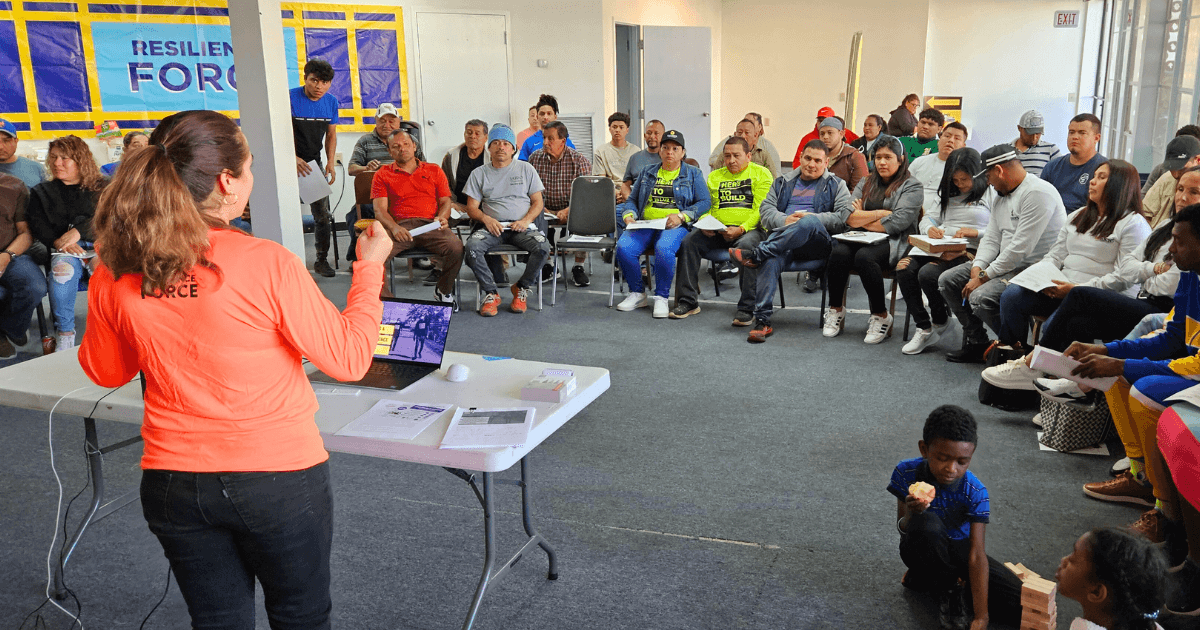
What stood out to you about the workers’ stories? What did you hear about their health needs on the job?
Fall protection was a theme throughout the training. We heard more than one terrifying story of a resilience worker falling from a roof, and ending up in a coma, or not being able to work for extended periods of time. One worker, who now works with Resilience Force, named Mariano, was working in Florida when he fell, ending up in a coma for 12 days. He was abandoned by his employer, so at the hospital, nobody knew who he was.
A lot of workers talked about the work pressure after a hurricane, of being called in immediately after the storm to urgently tarp damaged houses so they don’t sustain further damage. Some were tasked to tarp 12 houses a day – which is not realistic. More often than not, they were not trained in fall protection. Anecdotally, we know these resilience workers fall into a deeper category of danger than your average construction worker -- and construction work in and of itself is dangerous. It’s something that needs to be addressed urgently, as the climate crisis only gets more severe.
People don’t often think about the workforce that rebuilds our communities after a disaster. But these workers are critical to our ability to navigate the deepening impact of our climate crisis, a crisis that is here and now and is an existential threat. Yet the climate workers encounter exposures to extreme hazards that impact their health and well-being. Moreover, they encounter labor violations such as wage theft. A focus on climate justice must include attention this workforce to ensure their dignity, health, and safety.
You mentioned that the participants were Latinx. What role do their cultures and backgrounds play in their work?
First and foremost, we need more trainings that are culturally contextual and linguistically appropriate. There is simply a dearth of any training, but particularly for those who speak Spanish and migrate from Latin American countries. Nuanced, relatable trainings are critical to keep workers engaged and to connect with them so they can absorb the training content and feel sufficiently supported and knowledgeable so they can act on those health trainings and stay safe.
Secondly, we did sense that there was an underlying message that several of the participants voiced, related to their own perception of being Latino or Latina that they can do this work, even if it’s dangerous, that because they’re Latino or Latina, they’re a kind of superhero, because they’re willing to take risks and do it all, even 12 roofs a day when it’s dangerous. One worker mentioned that there is sometimes this feeling or sense that taking care of themselves, backing off of the hardest or most dangerous work, isn’t something they do, and he added, that [taking care of one’s self] is something that white people do. He laughed as he told us this story, but his point is well taken. Perhaps there is some work to be done to assist people in recognizing their strengths as workers, yes, but that they deserve to have the health and safety measures to keep them safe, so they can push forward as the hard workers that they are, and get the job done, and also not get hurt in the process.
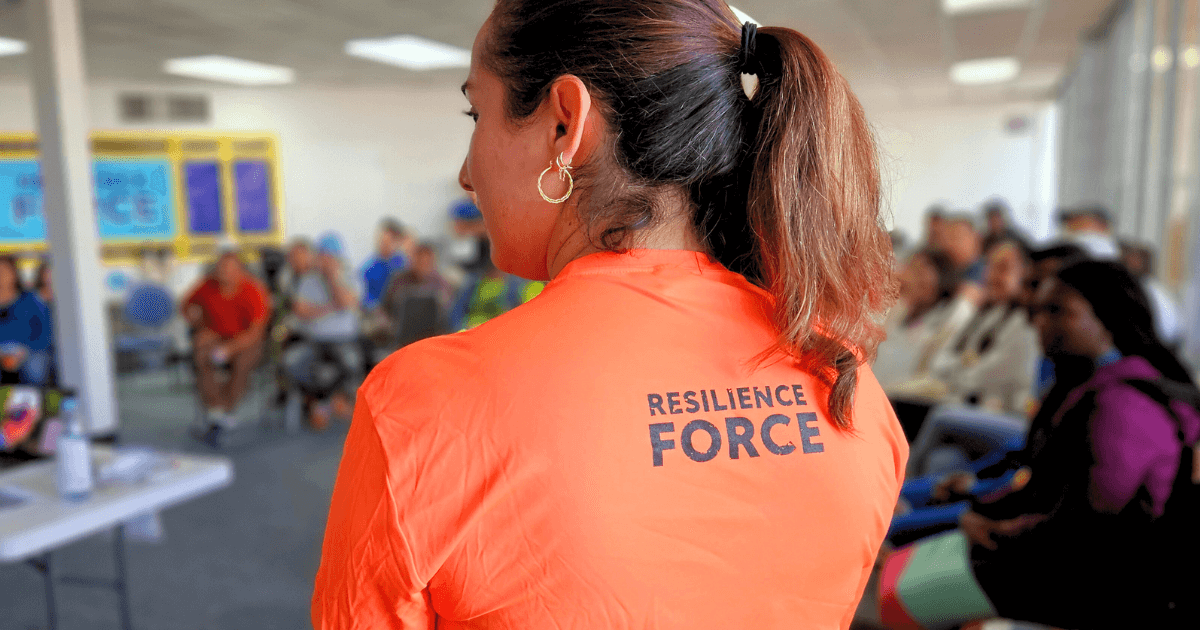
What about gender? You mention that 13 out of the 43 trainees were women. How does that impact your training?
To start, it’s really important to simply acknowledge that women are a part of the construction workforce. For us at MCN, that means our trainings need to relate to both men and women. From a broader policy perspective, it’s also important to understand. What does this mean in terms of the sizing and fitting of personal protective equipment? What does this mean in terms of health risks? For instance, we know pregnancy can make one more vulnerable to heat.
This is a little different than a lot of MCN trainings, which typically are train-the-trainer.
Yes, for me, most of the trainings I facilitate tend to be one step removed: we are training clinicians or community health workers, who then care for or train the workers directly. Here, we engaged directly with the workers. While many of the workers’ stories were painful to hear as they shared their experiences regarding injuries and exploitation, it was also really powerful to hear directly from them.
But MCN trainings always take an approach that centers and engages the workers, and this one was no different. So, when we saw more women in the training, we included them in the discourse. We paid attention to the underlying beliefs and practices that the workers were bringing from their country of origin, and their languages and preferences. We focus on play, to keep people engaged, so we used a game to reinforce concepts and to assess learning. And then, of course, we measure our impact. Workers told us that they were highly satisfied with the training and many asked for more trainings.
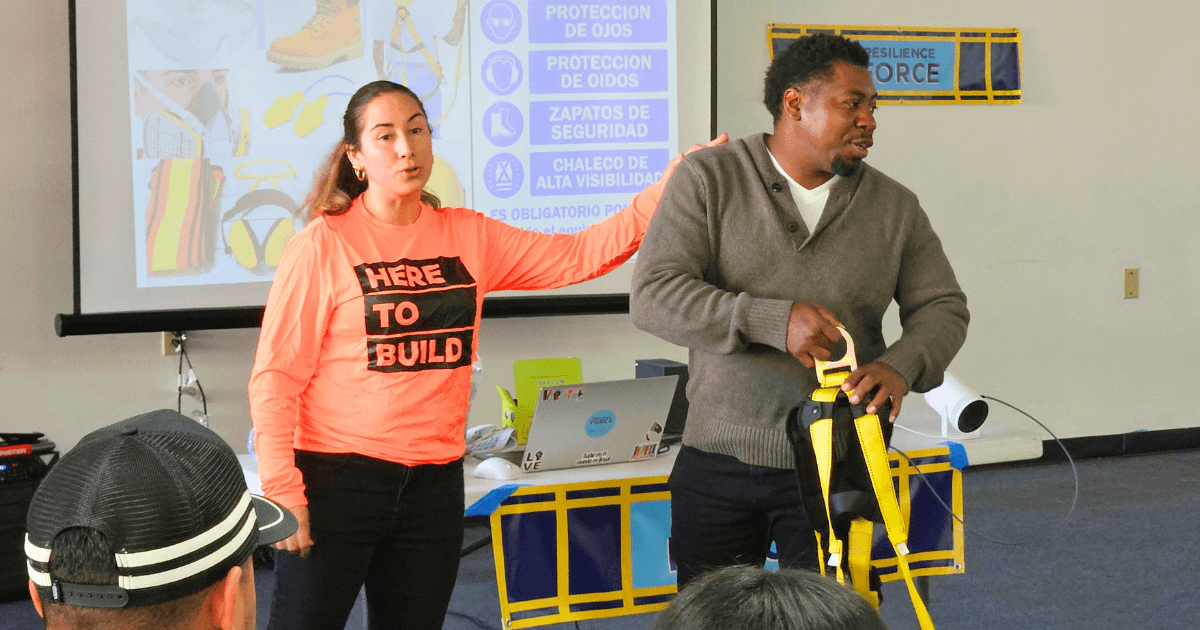
What’s the next step?
MCN and Resilience Force have important commonality in our respective missions. It was really great getting to know the staff and the organization better. Moving ahead, we are looking for funding to combine our expertise and build a robust worker health and safety training program that emphasizes the resilience workforce and addresses the environmental, labor, and climate injustices these largely immigrant workers encounter as they rebuild our communities.
Read more about MCN’s climate justice work on our Climate Justice page, in English and Spanish.
Read more blogs about climate and workers:
Climate Change is Impacting Health Care Provision. Community Health Centers Push Back
Supervisor Believed Construction Worker Was on Drugs. He Was Dying of Heat Stress
- Log in to post comments
